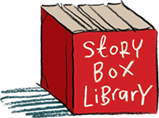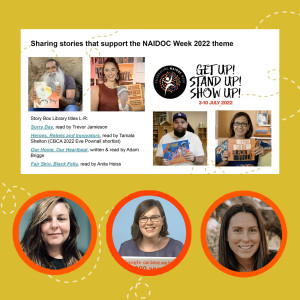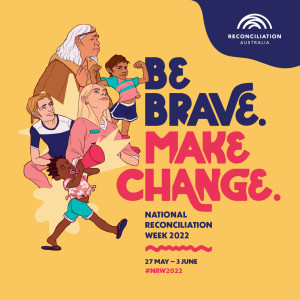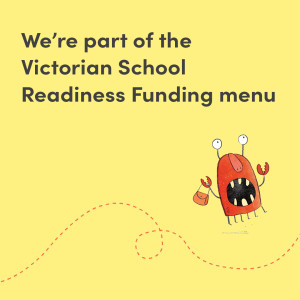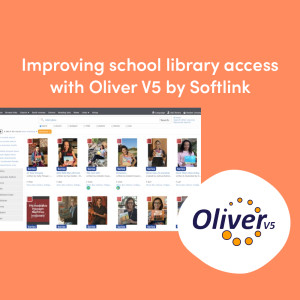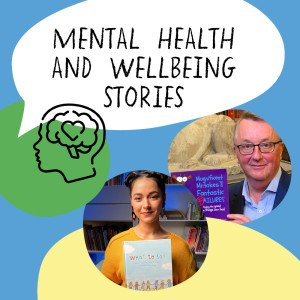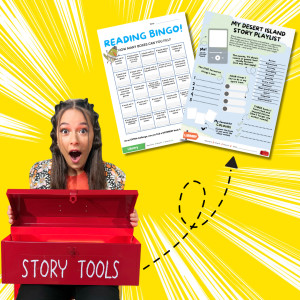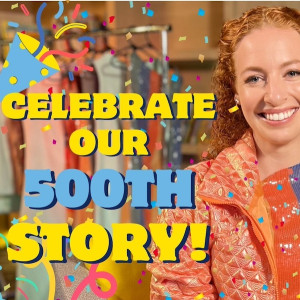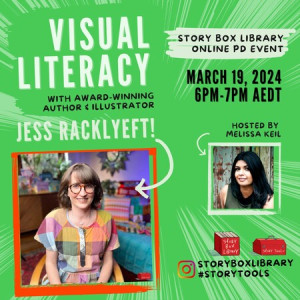Learning to Ngangaanha: Caring For Our First Nations' Stories, Cultures and Perspectives
08 Feb 2024
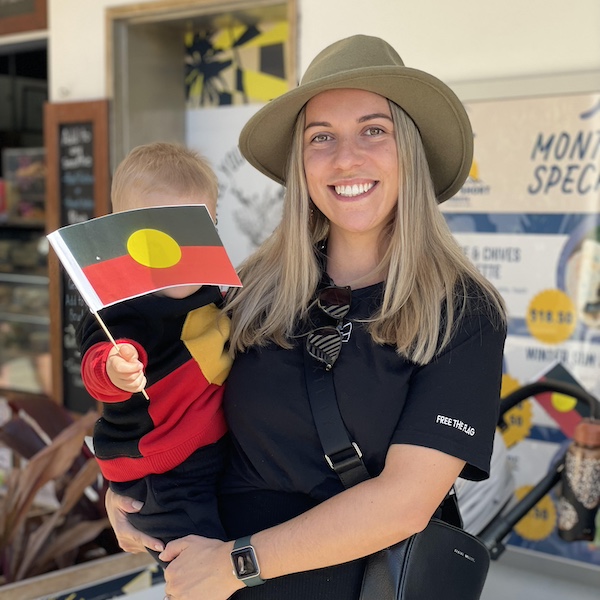
We are delighted to welcome Wiradjuri, Ngemba and Paakantji woman, Jordyn to our blog. Jordyn is a primary school educator and long-time Story Box Library subscriber, who is passionate about caring for Aboriginal and Torres Strait Islander cultures, histories, perspectives and languages by supporting teachers from all walks of life to embed these meaningfully across the curriculum.
Can you tell us a little bit about yourself and Learning to Ngangaanha?
My name is Jordyn and I am a proud Wiradjuri, Ngemba and Paakantji woman. I am a primary teacher and mum to two little boys, Charlie (2 years old) and Leon (6 weeks old). I love spending quality time with my family – going to the beach, camping and exploring new places. Charlie and I love reading books together! I’ve always been a bookworm so seeing Charlie love books too brings me so much joy. We have a pretty impressive collection of books at home, but it’s great to have access to even more stories with the Storybox Library app on my iPad!
In addition to being a mum and teacher, I have an Instagram account, Facebook account and website – Learning to Ngangaanha. Ngangaanha is a Wiradjuri word meaning ‘to care for’ or ‘to look after’, and my online presence is a way for me to care for and look after Aboriginal and Torres Strait Islander cultures, histories, perspectives and languages by supporting teachers from all walks of life to embed these meaningfully across the curriculum. For me, caring for my culture means that it is passed on to our youngfullas!
What First Nations resources would you recommend for primary educators?
I believe all classrooms should have the AIATSIS Map of Indigenous Australia displayed. It is a great visual to help students understand that there are over 200 different Aboriginal and Torres Strait Islander language groups, with each having their own beliefs, stories and traditions. It is important to note that the map is not definitive. There may be alternative names and/or spellings of certain Nations, or groups that aren’t represented. Use this map as a starting point and visual aid, and then seek advice from relevant Aboriginal or Torres Strait Islander communities and/or complete additional research online for more accuracy.
Another important resource is the free online Narragunnawali Terminology Guide which clearly explains the most up-to-date and appropriate terminology to use when referring to Aboriginal and Torres Strait Islander peoples. The guide also explains why particular words should be capitalised such as Country, Elders and Indigenous. When I am having a conversation with someone, I can usually gauge how informed the person is in First Nations matters based on the terminology they use, and I feel an element of cultural safety when the person is referring to me and my community appropriately. I see it as a huge sign of respect!
Another wonderful resource is the Common Ground First Nations website and social media accounts (Instagram, Facebook and TikTok). Common Ground is a First Nations not-for-profit organisation that amplifies First Nations knowledge, culture and stories by working with First Nations communities to record cultural stories in new ways. Common Ground also creates free resources for schools! If you want to learn more about First Nations cultures from First Nations people, it’s worth reading the articles on their website (all written by First Nations people). While you’re there, check out their free educational resources such as the For Our Elders Resource and the resources for First Nations Bedtime Stories.
I have a list of more deadly resources on my website – Learning to Ngangaanha.
Why do you think children’s picture books are so crucial in bringing Aboriginal and Torres Strait Islander perspectives into all subject areas?
Children’s picture books are a wonderful resource for us all to continue learning about Aboriginal and Torres Strait Islander peoples, cultures and relationships with Country. There is not a single First Nations book that I haven’t learnt something from myself! It’s one of the many reasons why I suggest teachers incorporate Aboriginal and Torres Strait Islander perspectives with children’s picture books – so we can learn with our kids and students! First Nations books are carefully created to explain complex cultural understandings in a way that people of all ages can understand. I have a blog post on my website about ways teachers can use First Nations books here.
Can you give us your top 10 books by First Nations creators that you’d recommend for primary-aged students?
While it was REALLY hard for me to choose only 10 books to recommend, the following list covers many important First Nations concepts and topics – connection to Country, identity, language, activism and the Stolen Generations (to name a few!).
- Welcome to Country (Read by Aunty Joy Murphy Story Box Library)
- Come Together (Read by Isaiah Firebrace on Story Box Library)
- Ask Aunty: Seasons, an Introduction to First Nations seasons
- Sorry Day (Read by Trevor Jamieson on Story Box Library)
- Looking After Country with Fire (Read by Tamala Shelton on Story Box Library)
- For 60,000 Years (a future Story Box Library book!)
- Waru and Dhangal visit the Torres Strait Islands
- We are Australians (Read by Kirli Saunders on Story Box Library)
- My Culture and Me
- Somebody’s Land
I also have a webpage dedicated to First Nations children’s picture books on my website Learning to Ngangaanha.
What do you think is the biggest challenge facing educators wanting to use First Nations stories in the classroom?
I think the biggest challenge for educators is not wanting to say the wrong thing! I truly believe it is better to do something than nothing at all, so even if you are feeling worried about saying the wrong thing, it’s best to try. Use the Narragunnawali Terminology Guide mentioned above to feel confident in using the most up-to-date, appropriate and respectful terminology, and if you are ever corrected by a First Nations person, think of it as a good thing! Apologise, accept, and thank them for their advice, and use their feedback to improve your lessons in the future! If you want to include a First Nations book in your lessons but there is an Aboriginal or Torres Strait Islander word you’re unsure how to pronounce, see if there is an online reading of the book where a First Nations language speaker is reading the text… like on Story Box Library! Some of the more recently released First Nations picture books often include a QR code that you can scan to hear the book being read by a speaker of that language. I really like the Welcome to our Country book series by Adam Goodes and Ellie Laing for this reason.
Follow Jordyn on Insta @learning_to_ngangaanha
